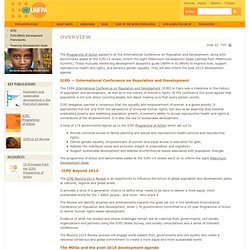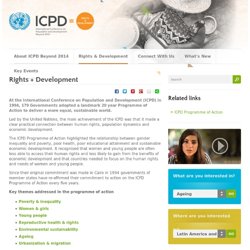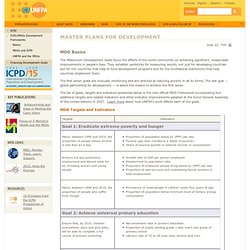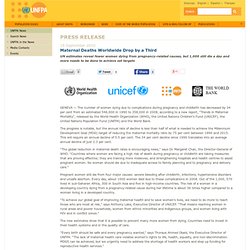

Giving What We Can. Myth 1.

‘We already spend a vast amount on foreign aid’ The full picture: The amount the developed world spends is tiny compared with its wealth. In 2012, governments of developed countries spent $128 billion on foreign aid, and private aid from citizens added $56 billion. BUT: The total aid was only 0.4% of the combined national income of those countries, or four dollars out of every thousand.The total aid was only $152 per person living in developed countries.There are 5.84 billion people in developing countries, which means that the total aid was only $33 per recipient. Failed Progrmas. Failed aid-funded projects in Africa - World news - Africa. The World Bank's private arm, the International Finance Corporation, has found that only half of its Africa projects succeed.
Why programs fail. BA_FINAL_-_A4. The%20Samaritan's%20Dilemma. Hearts of Darkness. In contrast to all other countries providing aid to the region, only the U.S. is providing aid-in-kind (actual commodities).

The U.S. is actually selling surplus wheat on the world market and using the proceeds to buy GE maize to ship to southern Africa, even though a number of the countries have requested wheat. But that’s a longer story. Aid organizations, including the World Food Program, prefer monetary donations to in-kind donations because of the greater flexibility cash affords. World Food Program spokesman Richard Lee notes: ONU Programs. Ited Nations: About Development. Mandate.

Financing the ICPD Programme of Action. This brochure tracks resource flows for financing the ICPD Programme of Action, including the revised estimates that take into account current needs and costs.

It provides facts and figures (based on data from 2011 and estimates from 2012 and 2013) to answer these questions: Why fund population activities? How much will it take to achieve the ICPD objectives? Where are we now? Who is funding what? Where is the money going? Because fifteen years have passed since the ICPD financial targets were initially set, UNFPA in 2010 produced revised estimates to meet current costs and needs.
Advocacy%20Brochure%202010-1. Data for Development. Learning in the field of population and development has been spurred by research analyzing links between population phenomena and reproductive health, human rights, gender equality and poverty, among other issues.

These linkages underpin the 1994 ICPD Programme of Action, which guides UNFPA's work. ICPD called upon governments and development agencies to support a wide range of research to inform public policy and improve programming strategies. Overview. The Programme of Action agreed to at the International Conference on Population and Development, along with benchmarks added at the ICPD+5 review, inform the eight Millennium Development Goals (derived from Millennium Summit).

These mutually reinforcing development blueprints guide UNFPA in its efforts to improve lives, support reproductive health and rights, and advance gender equality. ICPD - Rights + Development. At the International Conference on Population and Development (ICPD) in 1994, 179 Governments adopted a landmark 20 year Programme of Action to deliver a more equal, sustainable world.

Led by the United Nations, the main achievement of the ICPD was that it made a clear practical connection between human rights, population dynamics and economic development. The ICPD Programme of Action highlighted the relationship between gender inequality and poverty, poor health, poor educational attainment and sustainable economic development. MASTER PLANS FOR DEVELOPMENT. MDG Basics The Millennium Development Goals focus the efforts of the world community on achieving significant, measurable improvements in people's lives.

They establish yardsticks for measuring results, not just for developing countries but for rich countries that help to fund development programs and for the multilateral institutions that help countries implement them. Aumenta Pobresa. Aumenta la pobreza en México - BBC Mundo - Última Hora. Aumenta la pobreza en Italia. Las condiciones son particularmente difíciles en el sur del país.

La pobreza creció más en las familias con varios hijos o en donde hay ancianos. 18/07/2013 - El número de personas viviendo en la absoluta y relativa pobreza en Italia aumentó en 2012 y las familias en las regiones sureñas fueron las más afectadas, mostró ayer miércoles un reporte, lo que subrayó el costo humano de la recesión de posguerra más extensa en el país. Unos 4.8 millones de personas, o el 8% de la población italiana, enfrentan ahora la absoluta pobreza, lo que significa que no pueden hacer frente al mínimo aceptable de costo de vida, mostró el reporte de la oficina de estadísticas ISTAT. La cifra había sido de 3.4 millones de personas en 2011. En total 9.56 millones de personas, o el 15.8% de la población, son relativamente pobres según los estándares italianos, mostraron los datos, desde unos 8.17 millones en 2011. Disminuye Pobresa. Poverty gap at $1.25 a day (PPP) (%
Poverty & Equity Data. Most miserable countries in the world, 2012. La ONU indica que la tasa mundial de pobreza ha disminuido al 27% desde 1990. Maternal Deaths Worldwide Drop by a Third. GENEVA — The number of women dying due to complications during pregnancy and childbirth has decreased by 34 per cent from an estimated 546,000 in 1990 to 358,000 in 2008, according to a new report, "Trends in Maternal Mortality", released by the World Health Organization (WHO), the United Nations Children's Fund (UNICEF), the United Nations Population Fund (UNFPA) and the World Bank.

The progress is notable, but the annual rate of decline is less than half of what is needed to achieve the Millennium Development Goal (MDG) target of reducing the maternal mortality ratio by 75 per cent between 1990 and 2015. This will require an annual decline of 5.5 per cent. The 34 per cent decline since 1990 translates into an average annual decline of just 2.3 per cent. "The global reduction in maternal death rates is encouraging news," says Dr.
Business Leaders Engage in the Millennium Development Challenge. UNITED NATIONS — Senior business leaders met yesterday with heads of state, UN agencies and NGOs to strategize on concrete actions business can take to help close the gap on meeting the Millennium Development Goals. Secretary-General Ban Ki-moon, Virgin Group Chairman Richard Branson, President Abdoulaye Wade of Senegal, UNFPA Executive Director Thoraya Ahmed Obaid, and Danish Prime Minister Lars Løkke Rasmussen were among the hundreds of high officials from corporations, governments and world organizations at the United Nations Leadership Forum who stressed the critical role of the private sector in achieving the Millennium Development Goals. During the forum, over 23 companies announced new or renewed commitments to development, including Becton, Dickinson and Company, who is a prominent supporter of ‘Together for Girls’, a global public-private partnership to end sexual violence against girls, to which UNFPA is an active partner.
Secretary-General, at Private Sector Forum, Challenges Participants to Bring Solutions, Innovations to Scale to Reach Millennium Development Goals. Private Sector Forum on the Millennium Development Goals Secretary-General Ban Ki-moon, Virgin Group Chairman Richard Branson, President Abdoulaye Wade of Senegal and Danish Prime Minister Lars Løkke Rasmussen were among hundreds of high officials from corporations, Governments and world organizations at the United Nations Leadership Forum who today stressed the critical role of the private sector in achieving the Millennium Development Goals.
“There is no longer any doubt that business plays an integral role in delivering economic and social progress,” declared Mr. Ban, who decided after the first Private Sector Forum on the Millennium Development Goals and Food Sustainability in 2008 to hold an annual forum to ensure that the private sector contributed to intergovernmental negotiations during the opening of the General Assembly. Mr. Mr.
Dr. Dr. Mr. Milenium Indidcators. Millennium Indicators. Millennium Indicators. The Gapminder World 2006, beta. 2010%20Stat%20Annex. MDG%20Report%202012. Faoperations_1011. Datos quien dona. Switzerlan´s Programs. SDC in Kosovo - About Swiss International Cooperation. SDC in Kosovo - About seco. The State Secretariat for Economic Affairs (SECO) is the federal government's centre of expertise for all core issues relating to economic policy. Its aim is to ensure sustainable economic growth by putting in place the necessary regulatory and economic policy conditions.
SDC in Kosovo - About SDC. The Swiss Agency for Development and Cooperation (SDC) is Switzerland’s international cooperation agency within the Federal Department of Foreign Affairs (FDFA). In operating with other federal offices concerned, SDC is responsible for the overall coordination of development activities and cooperation with Eastern Europe, as well as for the humanitarian aid delivered by the Swiss Confederation.
The goal of development cooperation is that of reducing poverty. It is notably meant to foster economic self-reliance and state autonomy, to contribute to the improvement of production conditions, to help in finding solutions to environmental problems, and to provide better access to education and basic healthcare services. SDC in Kosovo - Home. NEW Country Strategy Kosovo 2013-2016. SDC in Kosovo - Cooperation with Eastern Europe. Transition assistanceSwiss Cooperation contributes to the strengthening of democratic institutions, good governance and stable economic framework conditions in former communist countries.
Switzerland strengthens support to UNAIDS.